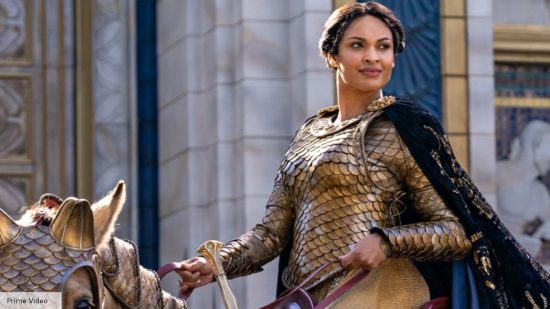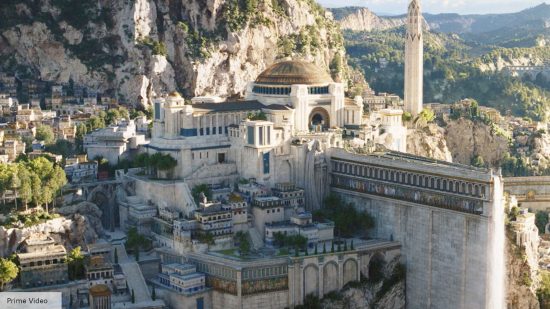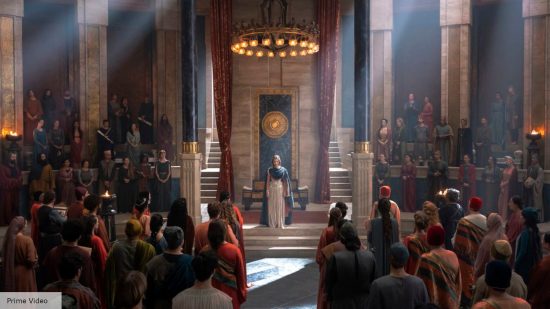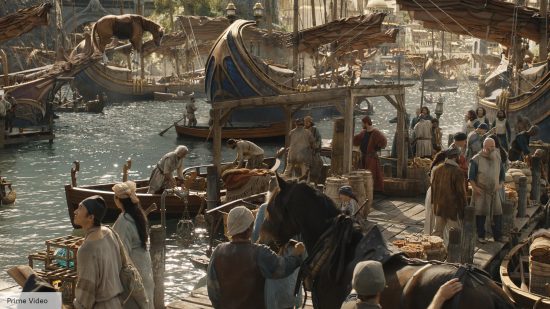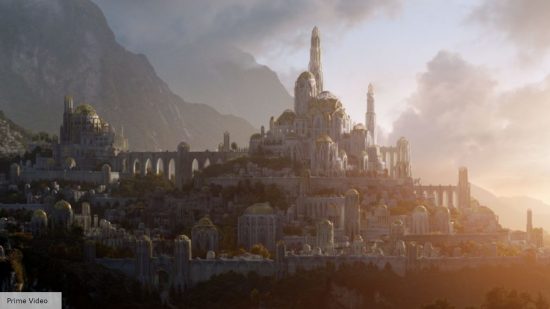What is Númenor, and who are the Númenóreans? The new Prime Video fantasy series Rings of Power has taken us back in time to a Middle-earth we’ve never seen before. The battles over Sauron’s magic rings and the events of the Lord of the Rings movies are thousands of years away, evil has been vanquished, and the races of elves, men, and dwarves are in their ascendency.
Of the races of Men, none are greater than the Númenóreans, a mighty seafaring civilisation who live in one of the most advanced cities that humanity will ever build. Yet all is not well in Númenor, the borders are closed to their long-time allies, the elves, and their queen Míriel dreams of the sea flooding in and destroying the Númenórean civilisation.
But what is Númenor? Where does it come from? Why do we never see it in the Lord of the Rings movies? Well, strap in. We’re about to give you a Middle-earth history lesson you’ll never forget.
The origins of Númenor
In the First Age, during the War of Wrath, many of the tribes of men bent their knee to the first dark lord Morgoth. However, not all of humanity fell. The Edain, the noblest clan of men, allied with the elves and battled by their side in the War of Wrath.
When Morgoth was defeated, the Edain were rewarded for their service by the Valar. They were gifted longer lives than normal men, and Ulmo, the Valar of the sea, created the island continent of Númenor between Middle-earth and Valinor for the Edain to live on.

Númenor in the Second Age
At first, there was peace. The first Númenórean king was Elros, the brother of the elf Elrond, and the relationship between elves and the Edain, now known as the Númenóreans, was a strong one.
Over the centuries, the Númenóreans became a powerful seafaring nation, with strong armies capable of cowing even the Dark Lord Sauron into submission. However, there was a knot at the centre of the Númenórean society.
When the Valar had lifted Númenor from the sea floor, they had imposed a rule on the Númenóreans. If they sailed west, they must keep Númenór in view. This obviously put a limit on how far the Númenóreans could sail, and it was a leash the seafaring peoples thought unfair, especially as the elves were free to come and go as they pleased.
The ban also meant that humanity would never be able to step foot on Valinor, the home of their gods. This alone perhaps could have been forgiven, but when it was combined with the immortality enjoyed by the elves, the peoples of Númenór came to see their former allies as the preferred children of the Valar and cut off all contact with the Eldar.
In the TV series, we see how Galadriel is treated by the Númenóreans, jealous of both her immortality and the perceived preferential treatment she receives from the Valar. We’ve also seen Sauro, disguised as Halbrand, worm his way into the royal court of Númenór.
Still, the Númenóreans kept their word, never sailing west and helping the forces of good in the war against Sauron. But evil is a patient thing. Sauron realising he could never defeat the Númenóreans in open battle, worked his wicked magics and manipulation to corrupt the island’s king Ar-Pharazôn.
The fall of Númenór
The dark lord managed to convince the people of Númenór to turn their backs on the Valar – using their jealousy of the elves’ immortality as a foundation – and worship Morgoth instead. Eventually, Ar-Pharazôn, who’d once been Sauron’s greatest foe, turned to the dark lord for council.
Sauron told the now-ancient king that he should build a fleet of ships and sail west to free Morgoth, who could help make Ar-Pharazôn immortal. Ar-Pharazôn burnt the white tree, a gift from the Valar, in sacrifice to Morgoth and built an army to besiege the home of the gods.
Sailing west, the mighty host of Númenór landed on the shores of Valinor and tried to besiege the city of Tirion. Very quickly, Ar-Pharazôn and his army learned why you don’t fuck around and find out with gods, and Eru Ilúvatar (Middle-earth’s big capital letter G god) stepped in and remade the world.
He started by sinking Númenór beneath the waves, destroying the island completely. He then took Valinor and removed it from Middle-earth completely, which, fun fact, also made the world round. In doing so, Ar-Pharazôn and his armies were trapped forever in something called the Caves of the Forgotten, which doesn’t sound fun.
Númenór in the Third Age
Fish primarily occupied the island of Númenór in the Third Age, but its people survived just about. The various settlements and colonies weren’t destroyed in the cataclysm, and they formed the Kingdoms of Gondor and Arnor.
The line of Isildur is probably the best-known surviving Númenórean family, with Aragorn being the most famous member. Treebeard does tease at one point that Númenór could be restored one day, but Tolkien never wrote if that came to pass.
If you want to learn more about the future of Numenor, check out our guide to the Rings of Power season 2, or you can check out our guide to the best Rings of Power characters, and when you’ve finished that, we have a breakdown of the Rings of Power cast.
